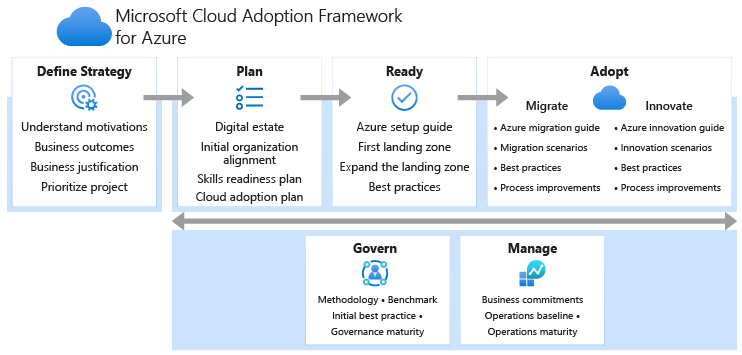Overview of tools, templates and assessments that can be used together with Microsoft Cloud Adoption Framework
Microsoft is offering an excellent framework to support cloud migration and adoption process – Microsoft Cloud Adoption Framework (CAF). The Cloud Adoption Framework is a collection of documentation, implementation guidance, best practices, and tools that are proven guidance from Microsoft designed to accelerate your cloud adoption journey.
The framework defined an iterative process with the following phases:
- Define Strategy
- Plan
- Ready
- Adopt
- Govern
- Manage
Each phase contains clear indications related to what are the activities that shall happen, best practices and case studies. For each of them, Cloud Adoption Framework (CAF) provides us a list of templates, tools, and assessment mechanisms that can help us improve the adoption and migration process.
In a series of posts related to each phase of Cloud Adoption Framework, I documented the tools and templates that can be used. For each tool or template, you can find a short description together with the URL to the location from where you can access it.
Don't forget that the tools and templates are free for use and can be used as a starting point for your own adoption journey.

Comments
Post a Comment